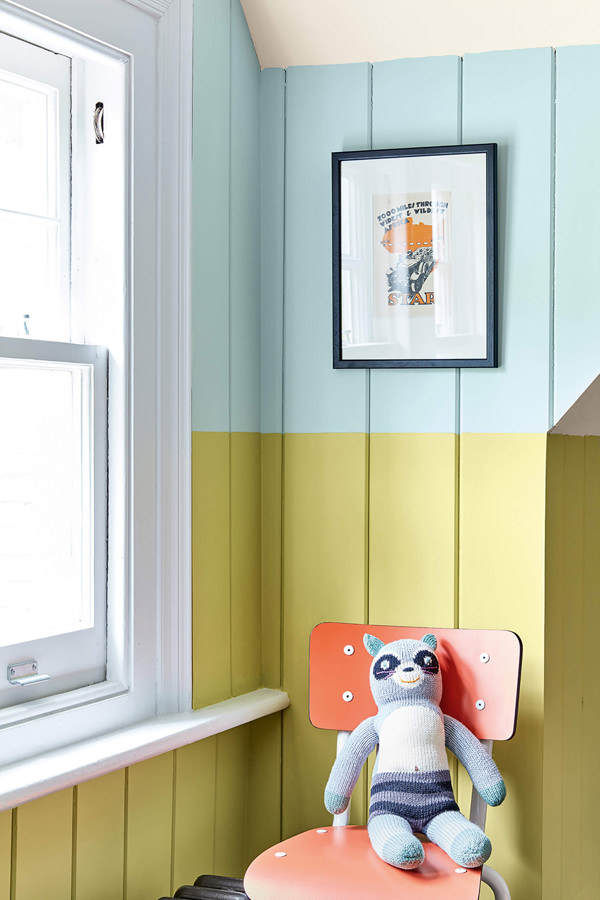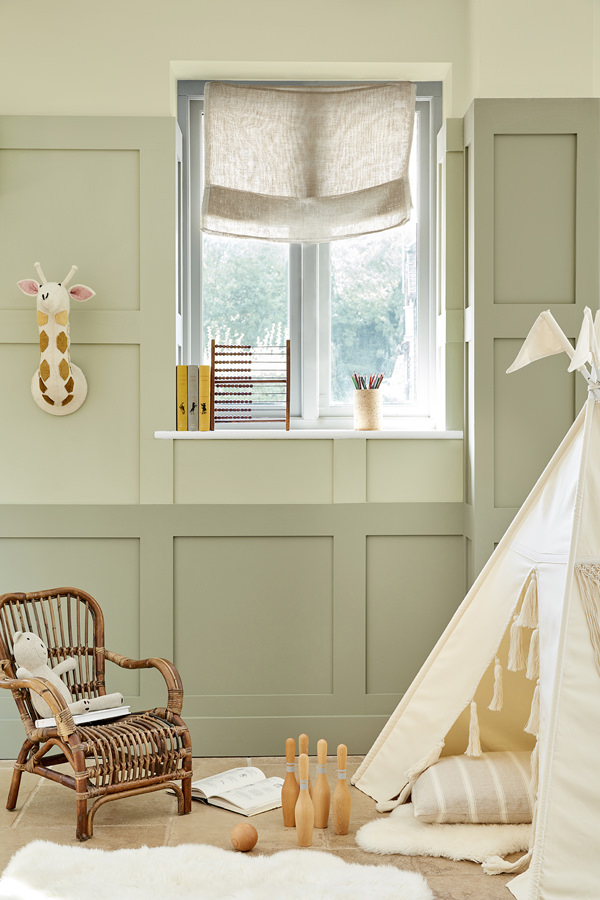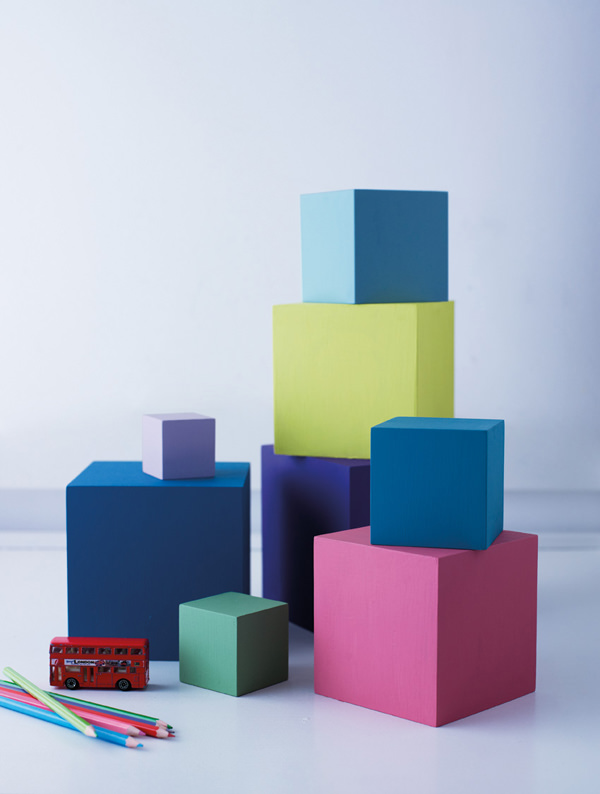Wall colours in the children's room - space, peace and creativity
The fact that colours have different emotional and psychological effects on people is undisputed and we have already addressed this topic in several other texts on this website. However, there is much more to it in the children's room, as colours not only influence a child's mood, concentration, creativity, imagination and play behaviour, but also help them to develop their visual skills. In infancy, three-dimensional vision and depth perception are not yet fully developed, so children need contrasts and contrasts to be able to recognise a room and estimate distances.
In children's rooms in particular, in addition to choosing the right colour tones, it is of course important to use high-quality, low-emission paints with responsibly sourced ingredients. Here you can rely one hundred per cent on us and the manufacturers we offer.

Pale Lime No. 70 (Lower wall)
Multitasking talent. What this room can do!
Sleeping, cuddling, learning, playing, chilling out: The children's room is a multifunctional space that has to meet a wide variety of needs and should therefore have an overarching colour concept. This does not necessarily mean that the walls have to be painted in several colours, as a uniform colour can also serve as a harmonious bracket and the colour accentuation of the individual functional areas is only achieved through furniture, decoration, pictures and furnishings. If the colour concept is well thought out and implemented, it can not only visually separate and optimise the individual zones, but also have a positive influence on the child's activities. However, it is crucial that there are suitable and unsuitable colours for both the child's personality and their activities.

It all depends on the child - an excursion into colour therapy
As different as children are, so different are the reactions that colours trigger in them. They are particularly sensitive to the effect and intuitively choose the colours they need. It is therefore essential to recognise and consider the character and nature of the child when choosing colours. Restless, aggressive and particularly active children calm down in a blue or green environment, whereas reserved, rather anxious children can be activated by red and orange.

Mister David No. 47 (Skirting board )
Rubine Ashes No. 243 (upper wall )
According to colour therapy, the following effects on children are attributed to the most important colours:
Red is the colour of life and has a stimulating effect on body and mind. If the child is listless and often tired, the colour red can increase vital energy and boost self-confidence.
Orange stands for cheerfulness, joie de vivre, inspiration and openness. It stimulates the appetite, increases the release of adrenaline, joie de vivre and creativity. If a child is often tired and listless, the colour orange can give them strength and increase their energy levels.
Yellow is associated with light, space, freshness and curiosity. It has a nerve-strengthening, mood-lifting and concentration-enhancing effect and is therefore particularly beneficial for children who are often stressed, tense, bad-tempered and nervous.
Green is the colour of regeneration, inner peace, health and growth. It strengthens the immune system, increases resourcefulness and has a healing, relaxing and calming effect on the whole body. In children, it can harmonise states of tension and restlessness and helps to restore inner balance.
Blue is a rather cold colour that is associated with calmness, serenity, freedom and distance. Accordingly, it has a cooling, concentration-enhancing and relaxing effect, allows the child to calm down and is therefore particularly suitable for the learning zone of the children's room.

Discover Little Greene
Co-determination in the choice of colour
Children develop a preference for colours at a very early age and should therefore be able to influence the colour scheme of their room. Many children's rooms are still painted white, even though architectural psychologists have long known that children don't like white. They recommend listening carefully to children and respecting their wishes. Nevertheless, limits should be placed on co-determination, as children tend to prefer bright colours that are not necessarily good for them and also change their preferences quickly. One option is to use their favourite colour in a lighter shade, as pastel shades are generally very suitable for children's bedroom walls.
As in any other living area, there is of course a vast number of design options and countless parameters that influence the ideal choice of colour for a child's room. Apart from the wishes, character and age of the child, the lighting conditions, room size and flooring also play a decisive role.
Are you looking for the perfect wall design for your child's room? Then trust the expertise of our colour professionals and let them guide you through the jungle of design options. We will be happy to advise you.
Gebrüder Tonsor. WE are your beautiful home.
